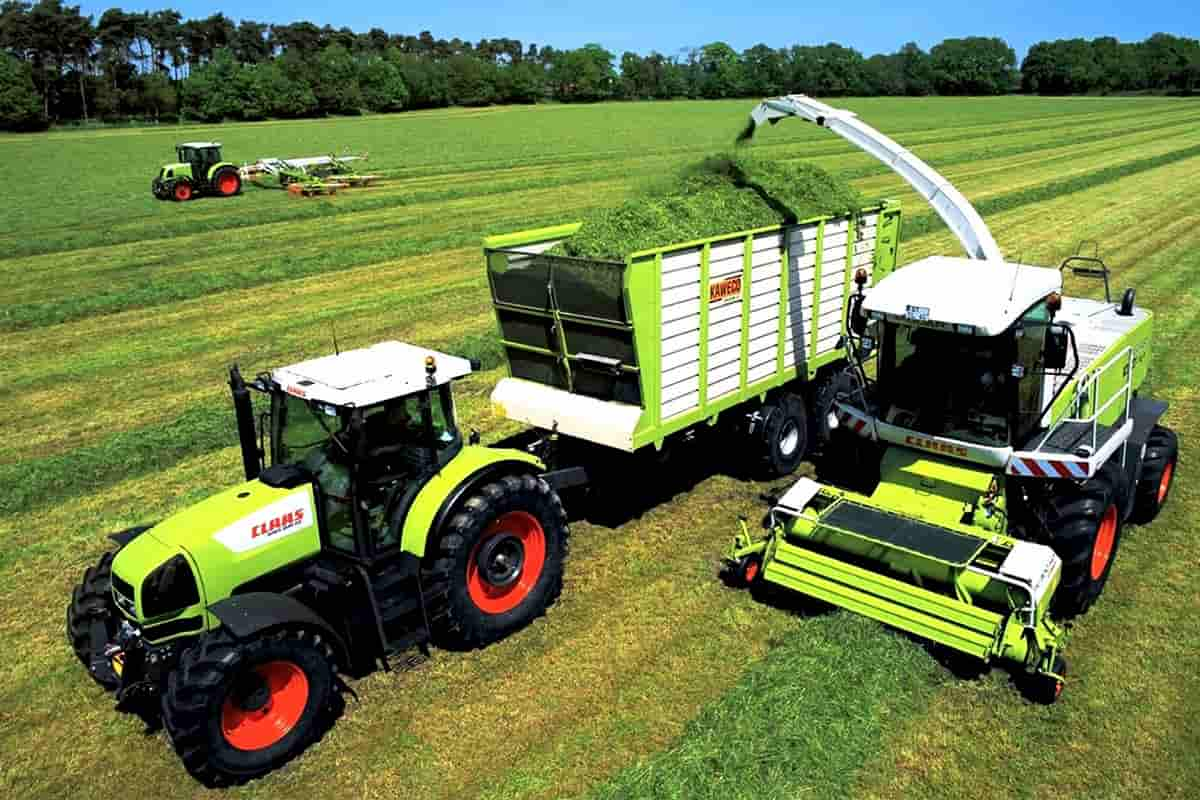The agricultural industry of Thailand is an important sector. In this way, the agricultural machinery market becomes a profitable market and thus the largest employer of the country's rural population. Agricultural production not only covers domestic consumption, but also brings significant income to the country through exports. However, the importance of agriculture has slightly decreased due to the expansion of other industries, such as industry, tourism, construction and services. The development of these industries led to a significant displacement of labor from the agricultural sector, which caused a labor shortage crisis on the farm. Therefore, mechanization was introduced to develop a modern agricultural production system in Thailand. Agricultural mechanization has created a market for tractors in Thailand. Agricultural Tractor Market is expected to grow at a CAGR of 4.2% during 2021-2026. There are two major market segments in Thailand with completely different profiles. The market for less than 50 horsepower tractors was almost entirely owned by Kubota before 2004 and the company still has a market share of over 70%. Drivers

Urbanization, growth of non-agricultural sectors, declining agricultural population leading to labor shortage, and growing demand for agricultural products for domestic consumption and export have increased the demand for agricultural machinery market in Thailand. Farmers are increasingly adopting agricultural mechanization to reduce labor costs and improve farm productivity. The country's population growth increases the demand for food. In addition, the government's effort to increase the export of the agricultural sector has increased the need to increase the productivity of farms. Therefore, agricultural machinery has become an effective way to increase production. The tractor is one of the most important machines and is expected to benefit the most from the macroeconomic factors mentioned above.
- Restraints
The increase in small farms reduces the field capacity of agricultural machines and increases energy consumption per unit area. In addition, inadequate rural infrastructure such as lack of irrigation and drainage system, along with local socio-economic conditions will adversely affect the growth of the agricultural tractor market.

The preference for used tractors and the lack of low-interest loans from financial institutions also limit farmers from investing in agricultural tractors. The market is segmented based on:
- End applications - utilities, row crops, garden type, orchard type, tillers and implement stands
- Horsepower - less than 40 hp, 40 hp 100 hp and more than 100 hp
- Engine type - two wheels and four wheels
- Geography The central plains and lower part of northern Thailand represent the largest market share for agricultural tractors, as the areas have a more intensive farming system.
- Competitive Landscape
Kubota, Yanmar, John Deere, Ford and New Holland are major players in the agricultural tractor market in Thailand. Thailand's tractor market is concentrated in a few multinational foreign players with fierce competition. Domestic production companies are relatively small, and therefore cannot produce high-quality machines. Major players focus on brand building to expand and retain their customer base. In addition, players are developing distributor networks to ensure fast service to farmers. Innovative pricing strategies and financing systems have also been introduced to meet the needs of price-sensitive farmers.

Agricultural mechanization in Thailand appears to be an understudied topic (at least for those limited to foul language and/or familiar with South Asian agricultural studies). Although there are quite a lot of studies, they are scattered and leave important gaps regarding some basic questions. This provides a limitation and an opportunity for a relatively short study such as this one. On the other hand, there are not many systematic search results that can be grouped quite easily. On the other hand, this study can claim that it review of tractors in Thailand and tries to formulate a basic story and some hypotheses. Studying agricultural mechanization in Thailand has to deal with quite serious data problems. Thus, for example, estimates of the area of cultivated land vary greatly, and consistent and reasonably accurate time series of the extent of tractors, especially the area in which tractors are used, have not been easily compiled. However, on the other hand, Thailand more closely resembles the "middle income" of low-income countries or the ASEAN comparison, the ratio between the share of agriculture in GDP and employment, the ratio of the latter to the former. It's about 3:1 in Thailand and a "middle income" country compared to about 2:1 in other countries. This shows that the income per person working in agriculture in Thailand is not only much lower than the average of middle-income countries as a group - whose GDP per capita is much higher - but also those countries with GDP per capita. Per capita is the same as in Thailand.

It also means that the gap between farm and non-farm income per worker is much higher in Thailand than other major ASEAN countries or low-income countries on average. Moreover, this gap has widened in Thailand over the past two decades much more than in "middle-income countries" or ASEAN comparisons (with the exception of Indonesia). This relative inequality and growing disparity in income per person working in agriculture and non-agriculture in Thailand is all that can be seen in the context of the very rapid growth of agriculture. As an aside, as Oy Meesook knows, this seems to contradict his findings based on an analysis of the Household Income and Expenditure Surveys, according to which "the income gap between urban and rural households in large areas of Thailand decreased over the period under review." (1962) /63-1975/76)" and therefore "agricultural growth had a direct effect on reducing ... inequality between sectors". For the two sets of results to be consistent, the per capita income of rural non-agricultural workers must grow much faster than that of rural agricultural activities and/or the rural labor force share must have increased significantly. It seems rather unlikely that either of these two phenomena occurred to the extent necessary to offset the effects of the aforementioned income disparity between urban and rural households.
